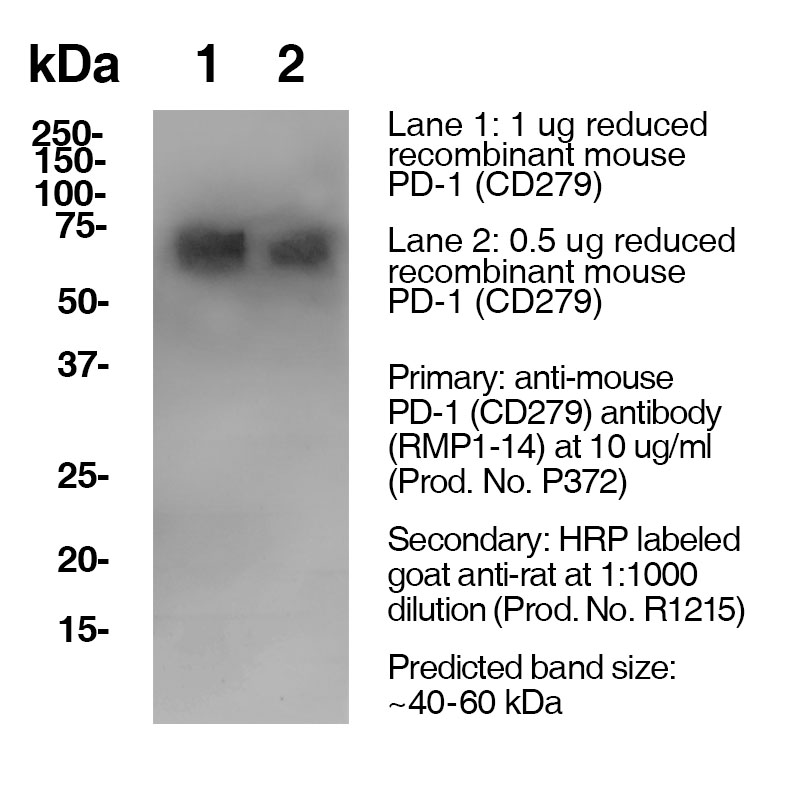Anti-Mouse CD279 (PD-1) (Clone RMP1-14) - Purified in vivo PLATINUM™ Functional Grade
Product Code:
LEI-P372
LEI-P372
Host Type:
Rat
Rat
Antibody Isotype:
IgG2a κ
IgG2a κ
Antibody Clonality:
Monoclonal
Monoclonal
Antibody Clone:
RMP1-14
RMP1-14
Regulatory Status:
RUO
RUO
Target Species:
Mouse
Mouse
Applications:
- Blocking
- Functional Study
- In Vivo Assay
- Western Blot (WB)
Shipping:
2-8°C
2-8°C
Storage:
Functional grade preclinical antibodies may be stored sterile as received at 2-8°C for up to one month. For longer term storage aseptically aliquot in working volumes without diluting and store at -80°C. Avoid Repeated Freeze Thaw Cycles.
Functional grade preclinical antibodies may be stored sterile as received at 2-8°C for up to one month. For longer term storage aseptically aliquot in working volumes without diluting and store at -80°C. Avoid Repeated Freeze Thaw Cycles.
No additional charges, what you see is what you pay! *
| Code | Size | Price |
|---|
| LEI-P372-1.0mg | 1.0 mg | £283.00 |
Quantity:
| LEI-P372-5.0mg | 5.0 mg | £456.00 |
Quantity:
| LEI-P372-25mg | 25 mg | £1,335.00 |
Quantity:
| LEI-P372-50mg | 50 mg | £1,938.00 |
Quantity:
| LEI-P372-100mg | 100 mg | £2,741.00 |
Quantity:
Prices exclude any Taxes / VAT



